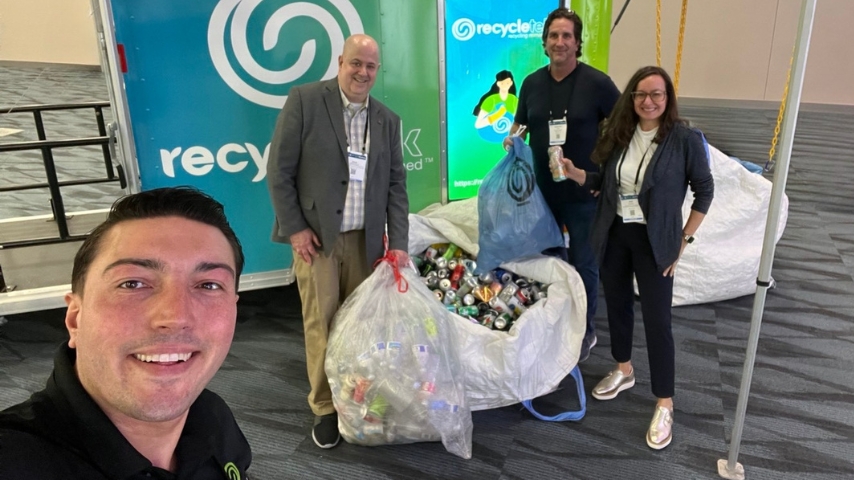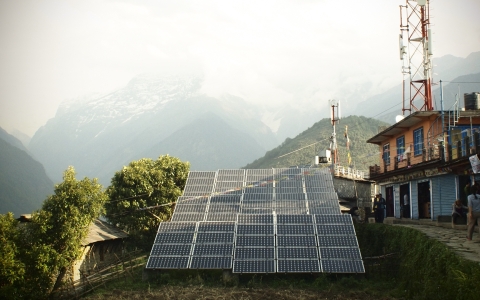Advancing Sustainable Manufacturing
Advancing Sustainable Manufacturing


ASME drives the conversation on sustainable manufacturing, offering industry expertise, innovative solutions, and a global network to advance sustainable practices and technologies.
The most recent research revealed that the global manufacturing industry contributes 34 percent of the global carbon emissions. On a basic level, for example, energy prices and availability fluctuate, so manufacturers have a very real interest in reducing their energy use in ways that do not hamper productivity. This need, combined with climate change initiatives, has led to pursuing such projects as renewable and sustainable energy, carbon capture and storage, and also energy efficiency.
By fostering collaboration among industry leaders, standards developers, and technology innovators, ASME aims to help address such energy challenges. The Society’s commitment to sustainable manufacturing took center stage at the inaugural Sustainable Manufacturing Expo. The event showcased innovative solutions in digital twin technology, biomaterials, IoT sensors, and automation.
Central to ASME's participation was a fireside chat, “Advancing Sustainable Manufacturing Through Digital Innovation and Standards.” The session brought together Chris Cantrell, ASME's senior managing director of Standards and Engineering Services, and Pepi Maksimovic, distinguished engineer in sustainability at Ansys, to explore how the convergence of digital innovation and engineering standards can accelerate sustainable manufacturing adoption.
An Episode of Agents of Change: Enabling Sustainable Manufacturing Through Engineering Workforce Development
“Manufacturing faces unprecedented sustainability challenges and ASME's expertise in standards development and professional development continues to provide the foundation for advancing technical knowledge and creating a safer, more sustainable world,” Cantrell said. “This event offers a unique opportunity to demonstrate how rigorous engineering standards, combined with digital innovation, can help organizations validate and scale their sustainable manufacturing initiatives.”
The discussion highlighted critical areas where standards and digital tools intersect:
• Accelerating the development of energy- and fuel-efficient manufacturing equipment.
• Validating processes for converting recycled materials into high-quality components.
• Advancing industrial applications of alternative energy.
• Optimizing manufacturing workflows for sustainability.
• Building capacity through professional development and training.
The fireside chat is looked at in depth in “Sustainable Manufacturing Needs Simulation,” where Engineering for Change covers how simulation technology and digital twins can help factories reduce waste and improve energy efficiency. The article offers readers a glimpse into the transformative potential of combining rigorous standards with digital innovation, which will be explored further during the expo session.
Iana Aranda is managing director of sustainability at ASME and president of Engineering for Change. For more information about ASME's commitment to building a sustainable future, please visit www.asme.org/about-asme/sustainability.

By fostering collaboration among industry leaders, standards developers, and technology innovators, ASME aims to help address such energy challenges. The Society’s commitment to sustainable manufacturing took center stage at the inaugural Sustainable Manufacturing Expo. The event showcased innovative solutions in digital twin technology, biomaterials, IoT sensors, and automation.
Central to ASME's participation was a fireside chat, “Advancing Sustainable Manufacturing Through Digital Innovation and Standards.” The session brought together Chris Cantrell, ASME's senior managing director of Standards and Engineering Services, and Pepi Maksimovic, distinguished engineer in sustainability at Ansys, to explore how the convergence of digital innovation and engineering standards can accelerate sustainable manufacturing adoption.
An Episode of Agents of Change: Enabling Sustainable Manufacturing Through Engineering Workforce Development
“Manufacturing faces unprecedented sustainability challenges and ASME's expertise in standards development and professional development continues to provide the foundation for advancing technical knowledge and creating a safer, more sustainable world,” Cantrell said. “This event offers a unique opportunity to demonstrate how rigorous engineering standards, combined with digital innovation, can help organizations validate and scale their sustainable manufacturing initiatives.”
The discussion highlighted critical areas where standards and digital tools intersect:
• Accelerating the development of energy- and fuel-efficient manufacturing equipment.
• Validating processes for converting recycled materials into high-quality components.
• Advancing industrial applications of alternative energy.
• Optimizing manufacturing workflows for sustainability.
• Building capacity through professional development and training.
The fireside chat is looked at in depth in “Sustainable Manufacturing Needs Simulation,” where Engineering for Change covers how simulation technology and digital twins can help factories reduce waste and improve energy efficiency. The article offers readers a glimpse into the transformative potential of combining rigorous standards with digital innovation, which will be explored further during the expo session.
Iana Aranda is managing director of sustainability at ASME and president of Engineering for Change. For more information about ASME's commitment to building a sustainable future, please visit www.asme.org/about-asme/sustainability.

Together, We're Building a Sustainable World
Learn how we can collaborate to fulfill your sustainability objectives.
